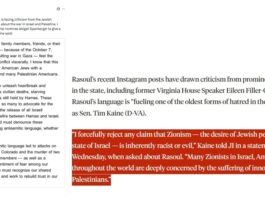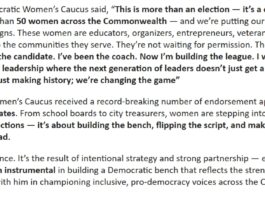This is my weekly op/ed this week in newspapers in my congressional district (VA-06). (I decided to take a break from my usual challenges to the conservatives over their support of Trump and the Republican Party.)
*************************
Some months back, in a piece titled “The Sacred Space of Lovers,” I wrote about how both our own fulfillment, and the sacred value of life itself, are served the closer we can come to the ideal of that lovers’ relationship that forms the foundation of human family life: an ideal that brings together into one rich human bond “kindness and pleasure, love and commitment, integrity and beauty, body and soul.”
We are built to find our deepest fulfillment in those things that most contributed to the survival of our kind. And as “life is sacred,” so too are those things that sustain life.
As with all such ideals, the human reality always falls (more or less) short. And for millennia, in this instance, some especially difficult obstacles have impeded the ability of us humans to reach “the sacred space of lovers.” For example:
Because the rise of civilization made an ongoing struggle for power among societies inevitable, what civilized societies have required of their members has often prevented the fulfillment of inborn human needs.
Because, in particular, only those societies that could muster sufficient power for that struggle could survive, civilized societies have depended for their survival – for millennia — upon making their men into effective warriors.
A good warrior must have the ability to fight well, undeterred by pain or fear. (There are reasons why men go to see doctors far less than women do: the warrior ethic teaches a man to ignore and override, not to treat, injuries and maladies.) That warrior ethic of toughness — inculcated by drill sergeants and football coaches alike — discourages experiencing vulnerability.
But, as that earlier piece said, “Lovers, ideally, inhabit a space that’s safe for intimacy and vulnerability.” The capacity to be open and vulnerable, however, cannot just be switched on and off. Thus the historically legitimate need for a society to train warriors has erected obstacles in the way of men being able to enter that ideal lovers’ space.
When a culture teaches its men (and boys) to deny a whole range of tender feelings associated with vulnerability, a gulf between men and women is opened up.
What is denied doesn’t just disappear. And what is forbidden in oneself is often projected onto others. So, in many civilized cultures, the softer aspects inherent in the nature of the human male – aspects that might weaken a warrior’s readiness to deal with a kill-or-be-killed confrontation — have been assigned for women to embody.
So it is that the more a culture is organized around readiness for war, the more the two sexes will be divided into polarized opposites—with the softness and vulnerability forbidden to the males enforced on the females.
So although there are natural differences between men and women, cultures have tended to magnify those differences into polarities.
With both sexes pushed away from their whole selves – with strength (which women also possess) and tenderness (which men also possess) divided by gender — what each can being to their meeting as lovers gets diminished.
But there’s another, still more destructive consequence of societies’ needing to harden its boys and men to make them good warriors. The suppression of those softer qualities is often accomplished by making those qualities shameful. In the warrior’s training, they are treated with contempt. And so, when those qualities get designated as “women’s nature,” the contempt for those qualities gets readily transferred into a contempt for women.
And misogyny – a disrespect and hostility toward women visible through the ages in the civilized world – enters in, closing the heart to love.
(The connection between misogyny and the requirements of warriors is illustrated by how frequently it is in military –and male athletic– groups that misogyny is an intrinsic aspect of the group culture.)
An additional element – connected with misogyny but a factor in its own right – is male domination. Male domination grows out of the need for warriors in two ways:
On the macro scale, the rise of chronic warfare that accompanied the emergence of civilization made the male-protector role more salient than it had formerly been. As men became objectively more important to society, they inevitably became more dominant.
At the smaller scale, the males in power also will naturally organize human relationships to reflect their own inner organization. Thus, just as they’ve been required to make their toughness dominate (and suppress) their vulnerability, in order to be good warriors, so also in human relationships they will think it right for the “tough sex” to dominate the “vulnerable sex.”
Nature – and human nature — gives us no reason to believe that women are any less worthy, valuable creatures than men. And the sacred space of lovers is achieved best in a relationship in which that equality of value is respected, and even cherished.
But when civilized societies deny that essential equal worth, they erect yet another impediment to the relationship between lovers realizing the ideal.
One more dimension: When civilization teaches people that what their society demands must override their own needs and feelings, one consequence in many cultures has been people learning to despise the bodily dimension of being human. So we sometimes see in human history people being taught the apparent contradiction that while life is sacred, the means by which it is perpetuated is wrong, dirty, sinful.
The “sacred space of lovers” is but one area where humankind faces its essential challenge: to create a civilization in which it is no longer necessary to put such obstacles in the way of human wholeness.
*******************
Andy Schmookler is the prize-winning author of The Parable of the Tribes: The Problem of Power in Social Evolution, and was the Democratic nominee for Congress in VA-06 in 2012.



